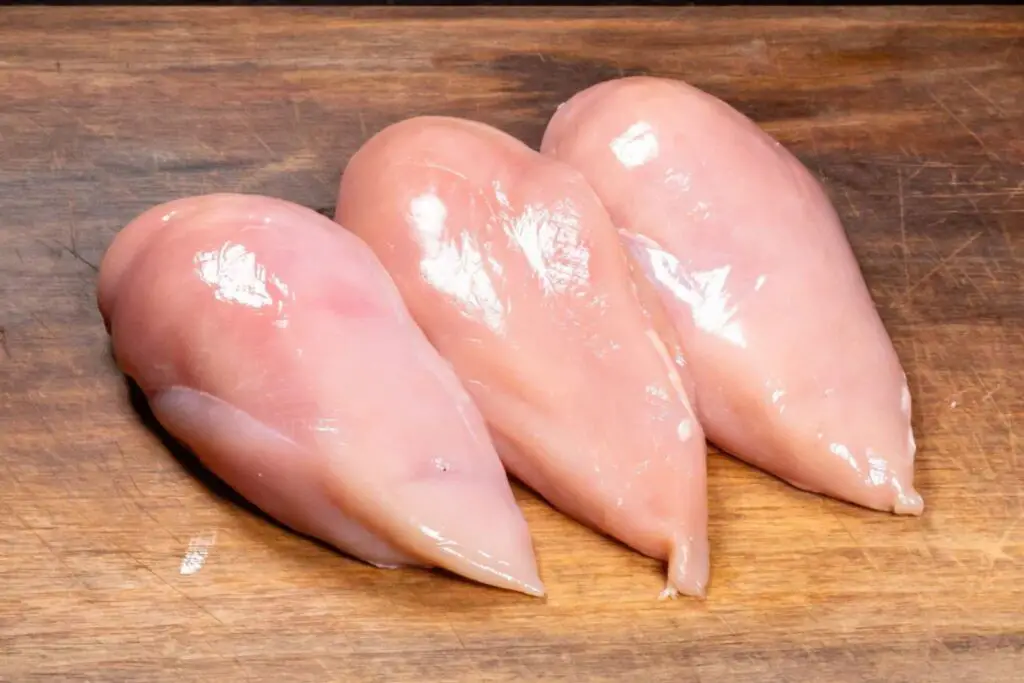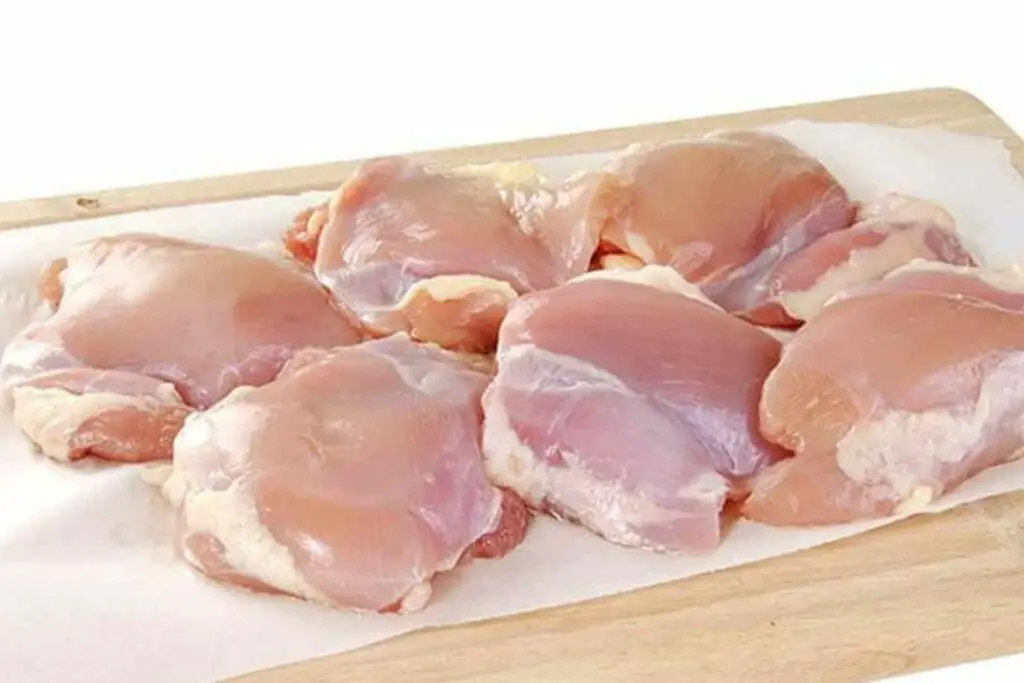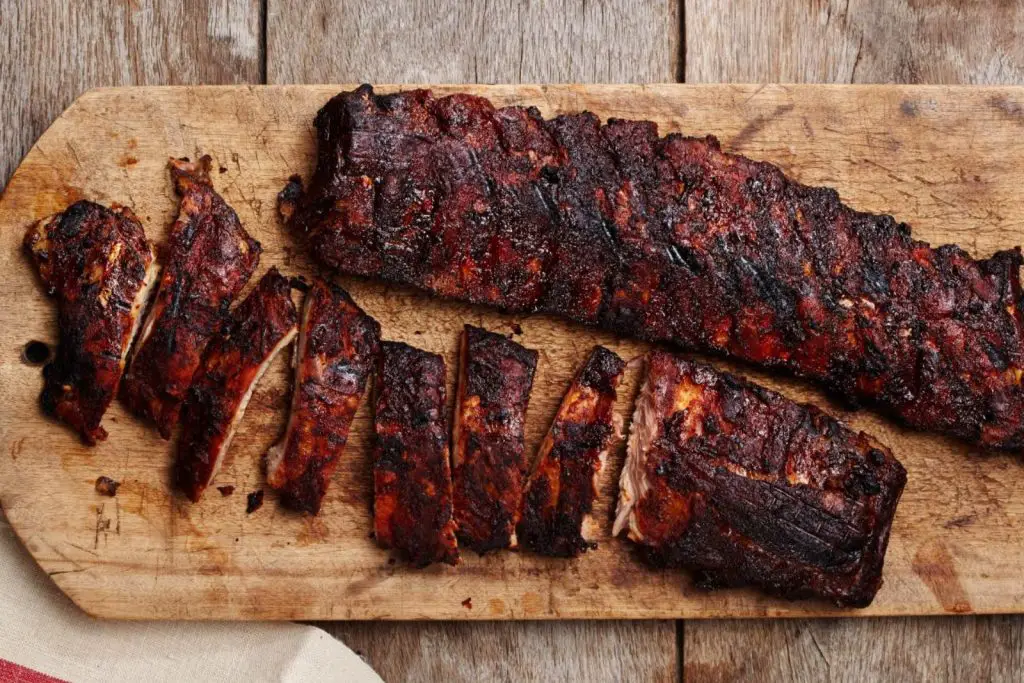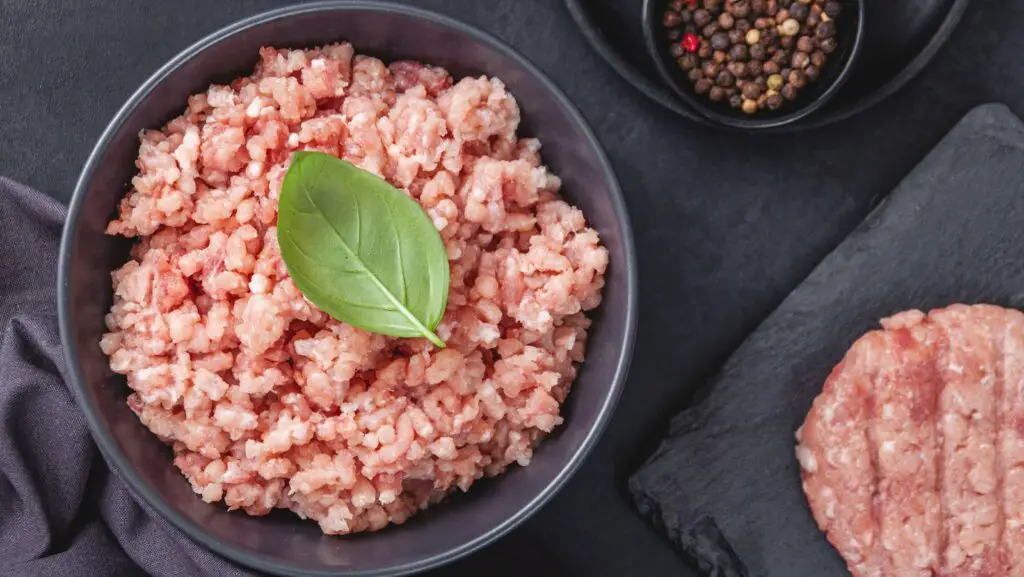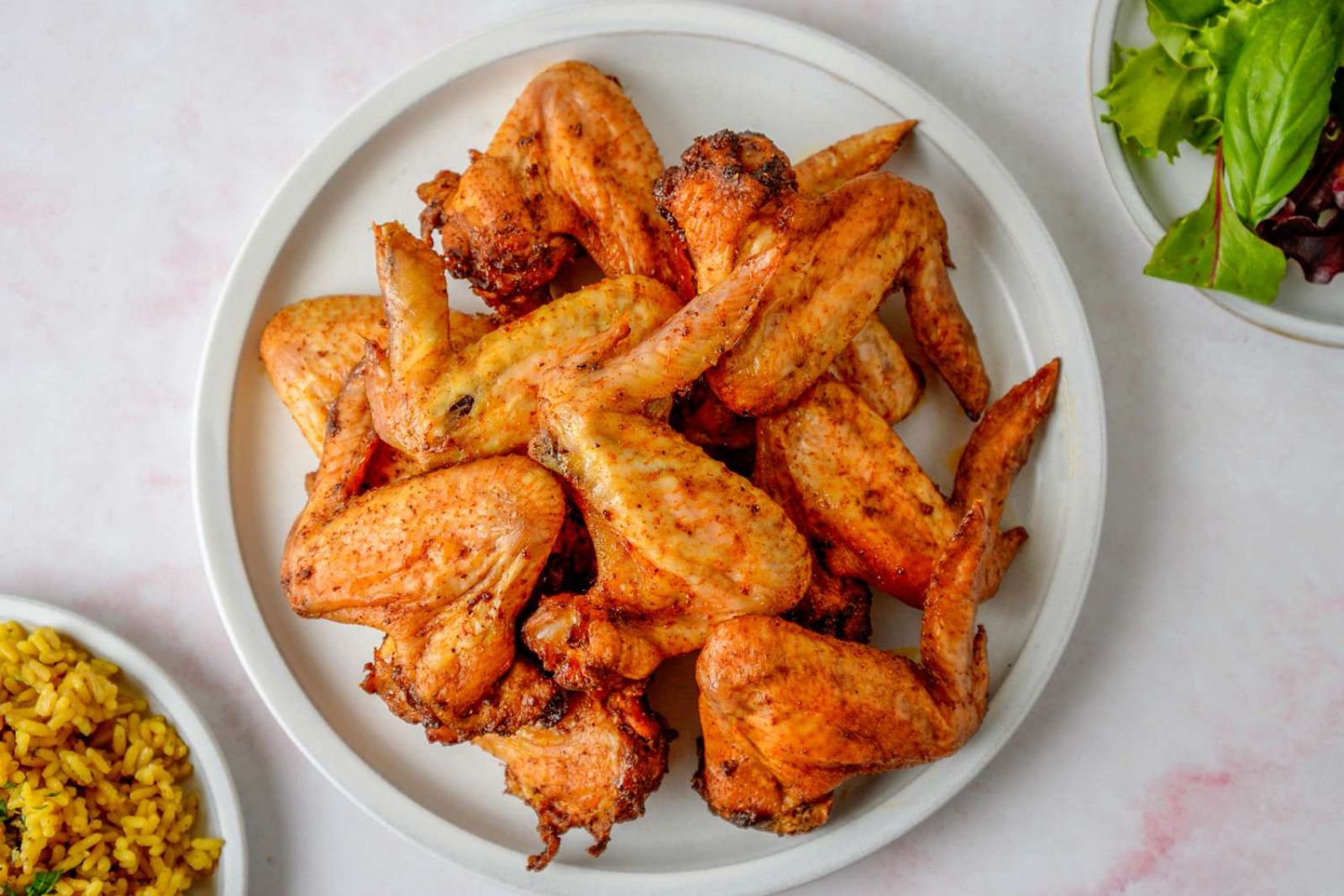
Cooked chicken wings are poultry wings that have been prepared through various cooking methods such as baking, frying, grilling, or broiling until they reach a safe internal temperature. They are a popular and flavorful appetizer or main dish enjoyed by many. Freezing cooked chicken wings is a convenient way to have a delicious snack or meal ready whenever you desire. Whether you have leftover wings from a previous meal or want to prepare a large batch in advance, freezing them properly will help maintain their flavor and texture. By following a few simple steps, you can ensure that your cooked chicken wings stay fresh and tasty in the freezer.
Here are the steps to freeze cooked chicken wings effectively:
- Step 1: Allow the cooked chicken wings to cool down
- Step 2: Separate the wings into portions (optional)
- Step 3: Wrap each portion tightly in plastic wrap
- Step 4: Wrap the plastic-wrapped wings in aluminum foil
- Step 5: Label and date the package
- Step 6: Place the wrapped cooked chicken wings in the freezer
Step 1: Allow the cooked chicken wings to cool down
After cooking the chicken wings, it’s important to let them cool down to room temperature before freezing them. This step is necessary to ensure that the hot wings don’t raise the temperature inside the freezer, which can negatively impact the quality of other frozen items. Placing hot food directly in the freezer can cause temperature fluctuations, potentially leading to uneven freezing and compromising the texture and taste of the wings.
By allowing the chicken wings to cool on a wire rack or a plate for about 30 minutes, you’re giving them enough time to reach room temperature. This gradual cooling process helps retain the moisture within the wings and prevents excessive condensation when you wrap them for freezing. Cooling them down also reduces the risk of bacterial growth, as rapid cooling can create an environment where bacteria thrive.
Furthermore, cooling the wings before freezing prevents moisture buildup in the packaging. If the wings are still hot when wrapped, the steam they release can condense and form ice crystals, leading to freezer burn and negatively affecting their quality. Allowing them to cool down completely minimizes this risk and helps preserve the taste and texture of the wings during freezing and subsequent thawing.
Remember, the cooling process may take longer for larger batches of chicken wings, so it’s essential to be patient and wait until they are no longer hot to the touch. Once the wings have reached room temperature, you can proceed to the next steps of wrapping them tightly in plastic wrap and aluminum foil for proper freezing and storage.
Step 2: Separate the wings into portions (optional)
When freezing cooked chicken wings, you have the option to separate them into portions before packaging. This step can be particularly useful if you prefer to have individual servings or if you anticipate needing only a specific number of wings at a time.
To separate the wings into portions, you’ll need a sharp knife. Start by identifying the joint that connects the drumette (the meatier section) and the flat (the smaller, two-boned section). Carefully cut through the joint, separating the two parts. Repeat this process for the remaining wings until you have separated them all.
Portioning the wings allows for convenient serving later on. If you have guests or want to enjoy a few wings at a time, you can easily thaw and cook only the desired number of portions without having to thaw the entire batch. It also helps with portion control and minimizes waste if you don’t plan on consuming all the wings at once.
However, if you prefer to freeze the wings as whole pieces, you can skip this step and keep them intact. Freezing whole wings can be more suitable if you have a specific recipe or cooking method in mind that requires them to remain whole.
Can I freeze cooked chicken wings with bones, or should I remove them before freezing?
Keeping the bones in cooked chicken wings before freezing can help maintain their texture and may save time during the preparation process. The bones can act as a natural insulator and contribute to the overall flavor of the wings. However, it is important to note that freezing bone-in wings may result in slightly uneven reheating and can require slightly longer cooking times. Ultimately, the decision to freeze chicken wings with or without bones depends on personal preference and convenience.
Step 3: Wrap each portion tightly in plastic wrap
To ensure the optimal preservation of cooked chicken wings during freezing, it’s important to wrap each portion tightly in plastic wrap. This step serves multiple purposes: protecting the wings from freezer burn and preventing moisture loss.
Begin by laying a piece of plastic wrap on a clean surface. Place the chicken wing portion onto the plastic wrap, ensuring that it is centered. Fold the sides of the plastic wrap over the wings, covering them completely. Then, tightly press the plastic wrap against the surface of the wings, removing any air pockets as you go. This airtight seal is crucial for preventing freezer burn, which occurs when the food is exposed to cold air and develops a dry, dehydrated texture.
By tightly wrapping the wings in plastic wrap, you create a barrier that helps retain their moisture and prevents ice crystals from forming on the surface. This helps maintain the quality, texture, and flavor of the wings during their time in the freezer.
Additionally, the tight seal provided by the plastic wrap helps to keep out unwanted odors and flavors that may be present in the freezer. This ensures that the wings retain their own distinct taste and do not absorb any unwanted smells or tastes from other frozen items.
Step 4: Wrap the plastic-wrapped wings in aluminum foil
To provide an extra layer of insulation and protection for the cooked chicken wings during freezing, it is recommended to wrap them in aluminum foil after the initial plastic wrap. This step helps maintain the quality of the wings and shields them from freezer odors.
After tightly wrapping each portion of the wings in plastic wrap, take a piece of aluminum foil and place the wrapped wings in the center. Fold the sides of the foil over the wings, covering them completely. Make sure to press the foil tightly against the wings, ensuring a secure and snug wrap.
The aluminum foil acts as a barrier against air, moisture, and odors. It helps to prevent freezer burn by creating an additional layer of protection, reducing the exposure of the wings to cold air and potential moisture loss. This helps maintain the wings’ texture and flavor during their time in the freezer.
Furthermore, the foil provides an added shield against freezer odors. It helps to prevent the wings from absorbing any unwanted smells or flavors that may be present in the freezer environment. This ensures that when you thaw and cook the wings later on, they retain their own distinct taste without any off-putting aromas.
Step 5: Label and date the package
Properly labeling and dating the package of frozen chicken wings is an important step in freezer organization and food safety. By clearly marking the contents and freezing date, you can easily identify the package and ensure that you consume the wings within the recommended time frame.
Using a permanent marker, write “Chicken Wings” on the aluminum foil. This simple label will help you quickly identify the package without having to unwrap or guess its contents. Additionally, it’s advisable to include the date of freezing. Write the month, day, and year of freezing so that you can keep track of how long the wings have been in the freezer.
Labeling the package serves as a helpful reminder of what is inside, preventing any confusion or wastage. It allows you to plan your meals and consumption accordingly, ensuring that the wings are used before their quality begins to decline.
Moreover, noting the freezing date is crucial for food safety. Different types of food have different recommended storage times in the freezer, and chicken wings are no exception. By dating the package, you can monitor the duration of freezing and ensure that the wings are consumed within the recommended time frame, typically within three months, to maintain their best quality.
Having clear and visible labels on the package also enables you to practice a first-in, first-out approach. This means that you can prioritize consuming the oldest batch of frozen chicken wings before using newer ones, reducing the chances of any wings going past their recommended storage time.
Step 6: Place the wrapped cooked chicken wings in the freezer
After wrapping and labeling the cooked chicken wings, the final step is to store them in the freezer. Proper placement within the freezer is essential to maintain the quality and ensure the wings freeze evenly.
First, locate a spot in the freezer where the temperature remains consistently cold. The back of the freezer is often the coldest area, so it is recommended to place the wings there. This helps maintain a stable and low temperature, preventing any fluctuations that may affect the quality of the frozen wings.
When arranging the wrapped wings in the freezer, lay them flat if possible. This maximizes space utilization and allows for easy stacking of multiple packages. Flat placement also helps prevent the wings from sticking together as they freeze, making it easier to separate individual portions when needed.
Ensure that you leave some space around each package. This allows for proper air circulation within the freezer, which helps maintain a constant temperature and ensures even freezing. Adequate air circulation prevents the formation of ice crystals and promotes better preservation of the wings’ texture and flavor.
Remember, avoid overcrowding the freezer with other items, as this can obstruct air circulation and lead to uneven freezing. Maintain a clear space around the wrapped wings to ensure optimal freezing conditions.
How long can cooked chicken wings last in the freezer?
Cooked chicken wings can last in the freezer for up to three months without a significant loss in quality. However, for optimal flavor and texture, it is recommended to consume them within this time frame. Properly stored and labeled chicken wings can be enjoyed for the entire duration without compromising their taste and texture.
Other related questions
How do I properly thaw frozen cooked chicken wings?
To properly thaw frozen cooked chicken wings, there are a few recommended methods:
- Refrigerator thawing: Place the frozen wings in a covered container and let them thaw slowly in the refrigerator. This method takes longer, usually overnight, but results in even thawing and helps maintain the texture and flavor of the wings.
- Cold water thawing: Seal the frozen wings in a leak-proof plastic bag and submerge them in cold water. Change the water every 30 minutes to ensure it stays cold. This method is faster than refrigerator thawing and takes about 1-3 hours, depending on the size of the wings.
- Microwave thawing: If you need to thaw the wings quickly, you can use the microwave. Follow the manufacturer’s instructions for defrosting poultry, as microwaves can have different power levels and settings. Be careful not to overcook the wings during the thawing process.
How do you reheat frozen cooked chicken wings?
To reheat frozen cooked chicken wings, there are a few recommended methods. One option is to bake them in a preheated oven at around 350°F (175°C) for approximately 20-25 minutes or until heated through. Alternatively, you can use an air fryer, following the manufacturer’s instructions, to achieve a crispy texture. Lastly, if time is limited, you can use a microwave, but be cautious as this method may result in slightly softer skin. It is important to ensure the internal temperature of the wings reaches 165°F (74°C) for safe consumption.
Can I refreeze cooked chicken wings?
It is generally safe to refreeze cooked chicken wings if they were thawed properly and handled under safe conditions. However, the quality may suffer as each freezing and thawing cycle can affect the texture and taste. To maintain the best quality, it is recommended to consume the cooked chicken wings after the first thawing and avoid refreezing whenever possible.
How do I know if the cooked chicken wings have gone bad after being frozen?
To determine if cooked chicken wings have gone bad after being frozen, there are several indicators to look out for. Firstly, check for any unusual or off-putting odors. If there is a strong, sour, or unpleasant smell, it may indicate spoilage. Additionally, examine the wings for any changes in color, texture, or the presence of mold. If there are significant discolorations, sliminess, or mold growth, it is best to discard them as these are signs of spoilage. Finally, trust your senses and taste. If the wings taste rancid, have an abnormal texture, or cause any discomfort, it is safest to avoid consuming them. When in doubt, it is better to err on the side of caution and discard potentially spoiled chicken wings.
Can I freeze chicken wings with sauce or seasoning?
Yes, you can freeze chicken wings with sauce or seasoning. However, it’s important to ensure that the wings are wrapped tightly to prevent freezer burn. Consider freezing them in individual portions or using freezer-safe containers to maintain the flavor and prevent the sauce or seasoning from becoming overly diluted during freezing.
Are there any special considerations for freezing breaded or fried chicken wings?
When freezing breaded or fried chicken wings, there are a few special considerations to keep in mind. Firstly, allow the wings to cool completely before freezing to prevent condensation and sogginess. Secondly, wrap each wing individually or place parchment paper between layers to prevent them from sticking together. Lastly, if possible, reheat the frozen wings in the oven instead of the microwave to help retain their crispiness.
Can I freeze cooked chicken wings that were previously refrigerated?
It is generally safe to freeze cooked chicken wings that were previously refrigerated, but the quality may be affected. Each time food is reheated and cooled, there is a potential for flavor and texture changes. Therefore, it is recommended to freeze cooked chicken wings soon after cooking rather than refrigerating them first to maintain optimal quality.



